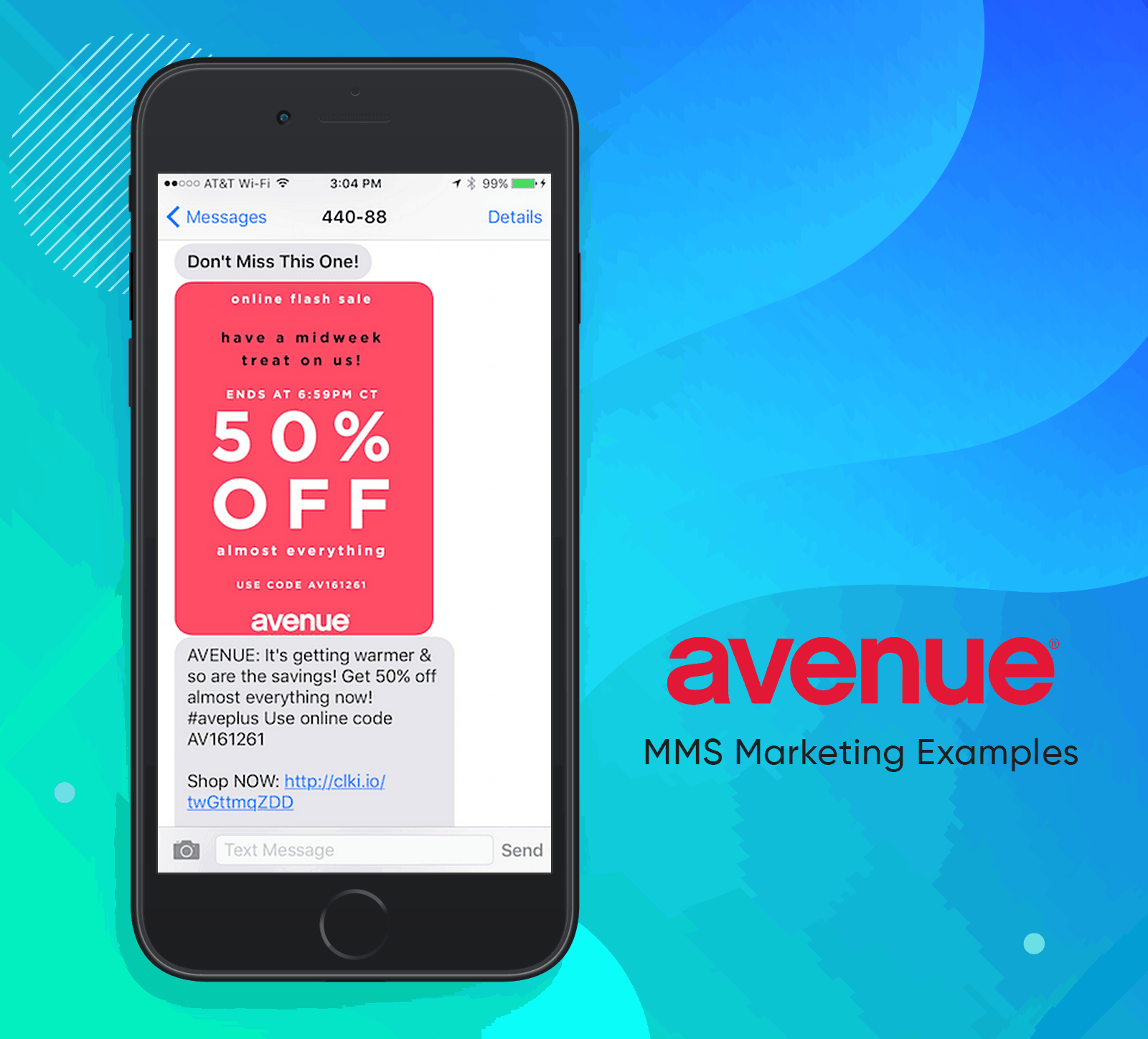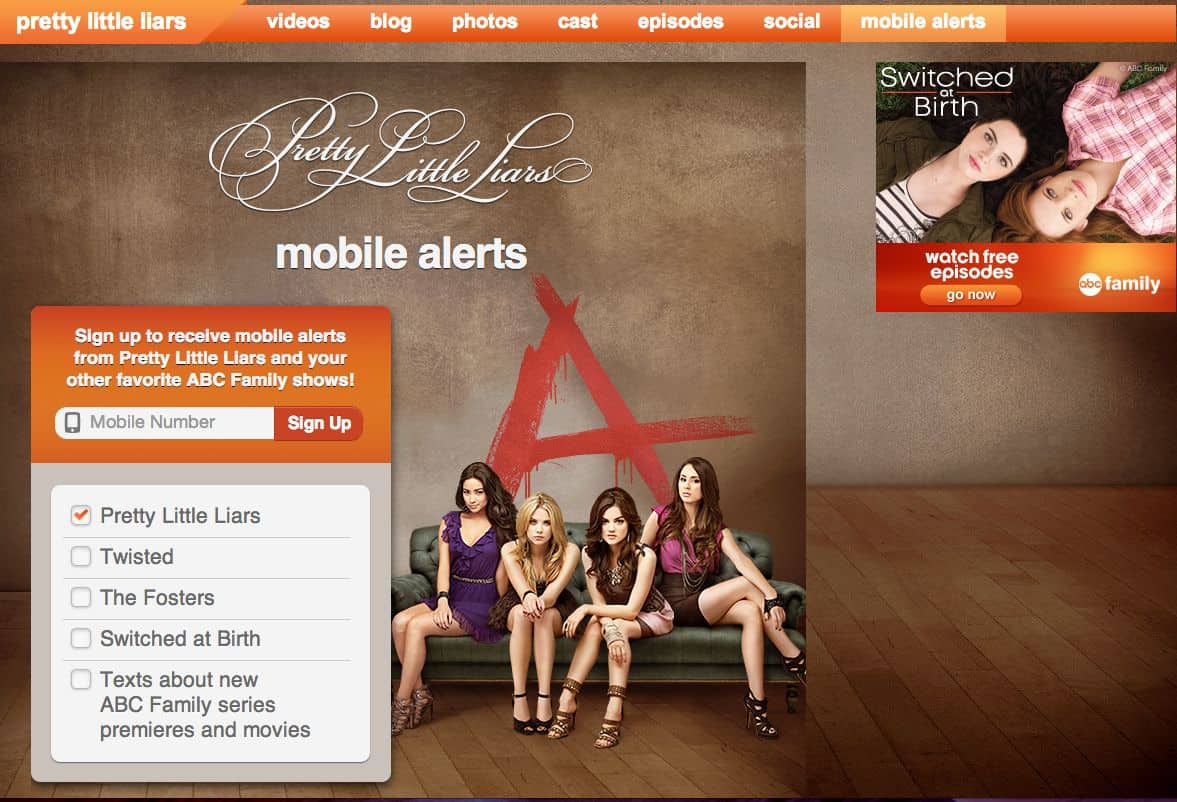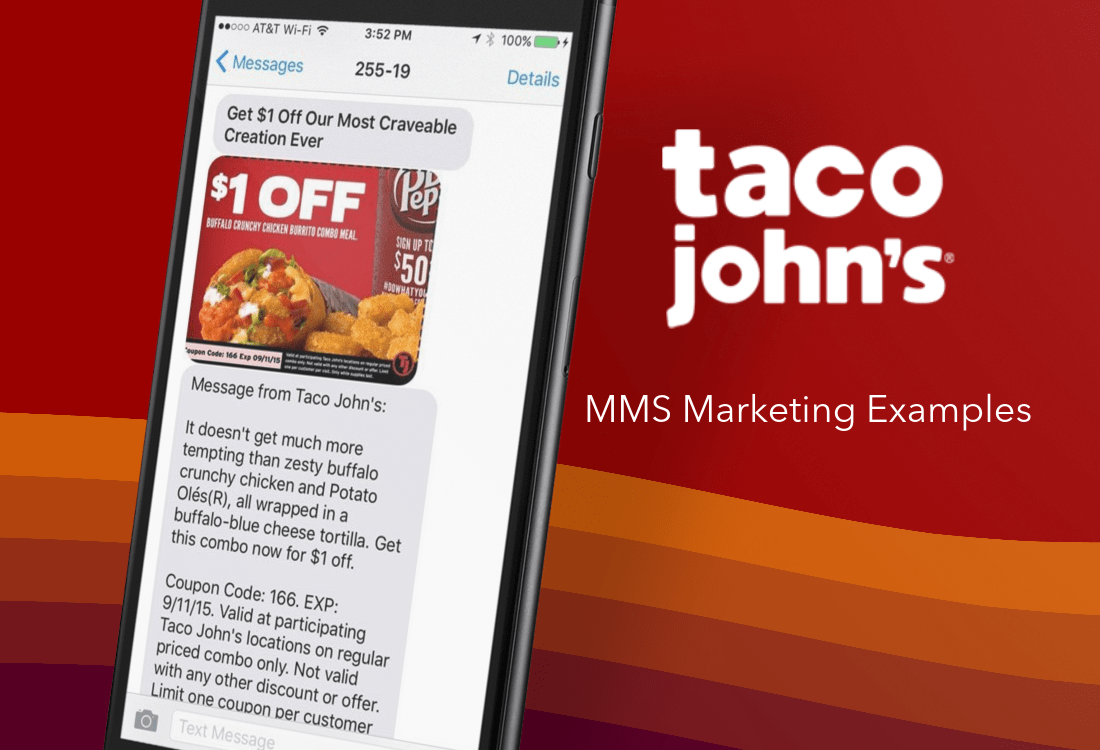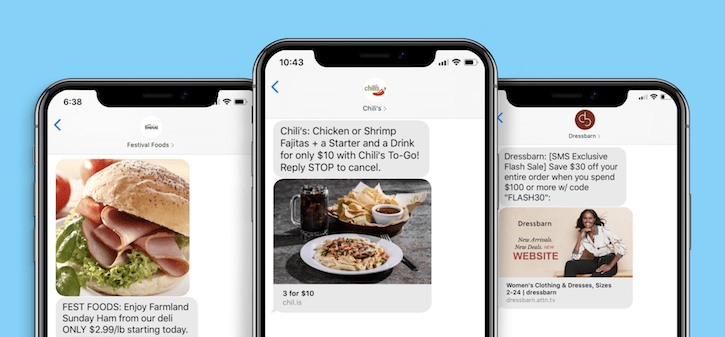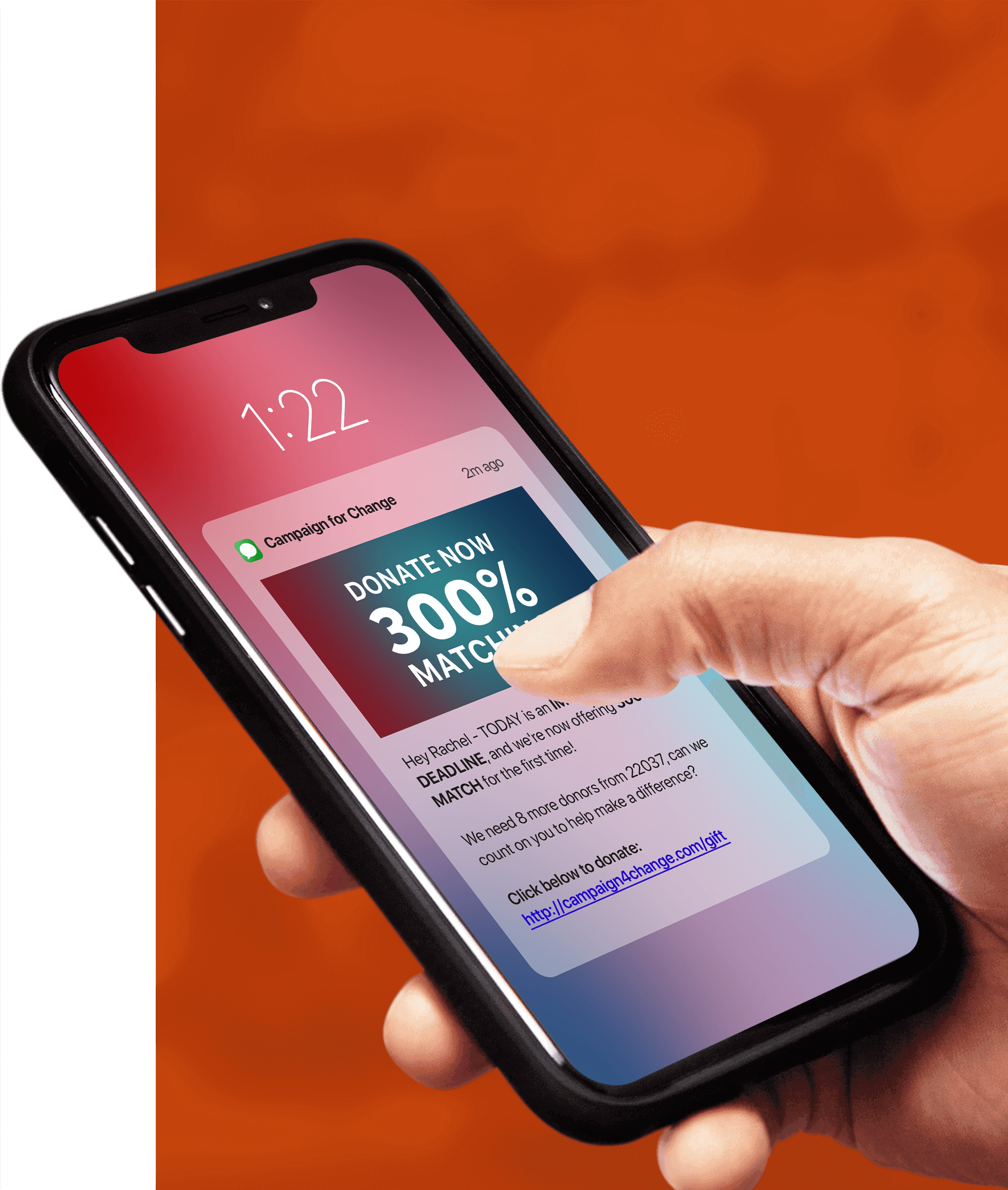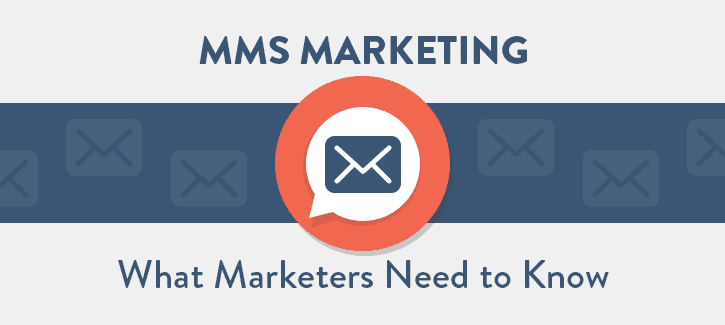
Are you a mobile marketer or enterprise brand that is interested in SMS or MMS marketing? If so, the team at Tatango has put together a comprehensive list below of everything a mobile marketer needs to know about MMS marketing.
If, after reading this blog post, you still have questions about mobile marketing, or are interested in launching your own MMS marketing campaign, contact the text message marketing experts at Tatango.
What Does “MMS” Stand For?
Let’s start off with the easiest question, but one of the most important questions when talking about MMS marketing. What does “MMS” stand for? MMS stands for “Multimedia Messaging Service”.
You may have also heard the term “SMS marketing”. This is another form of text message marketing, with the “SMS” standing for “Short Message Service”. We’ll talk more about both of these types of text messaging throughout this post.
Now that we’ve got that out of the way, let’s continue with what else mobile marketers need to know about MMS marketing.
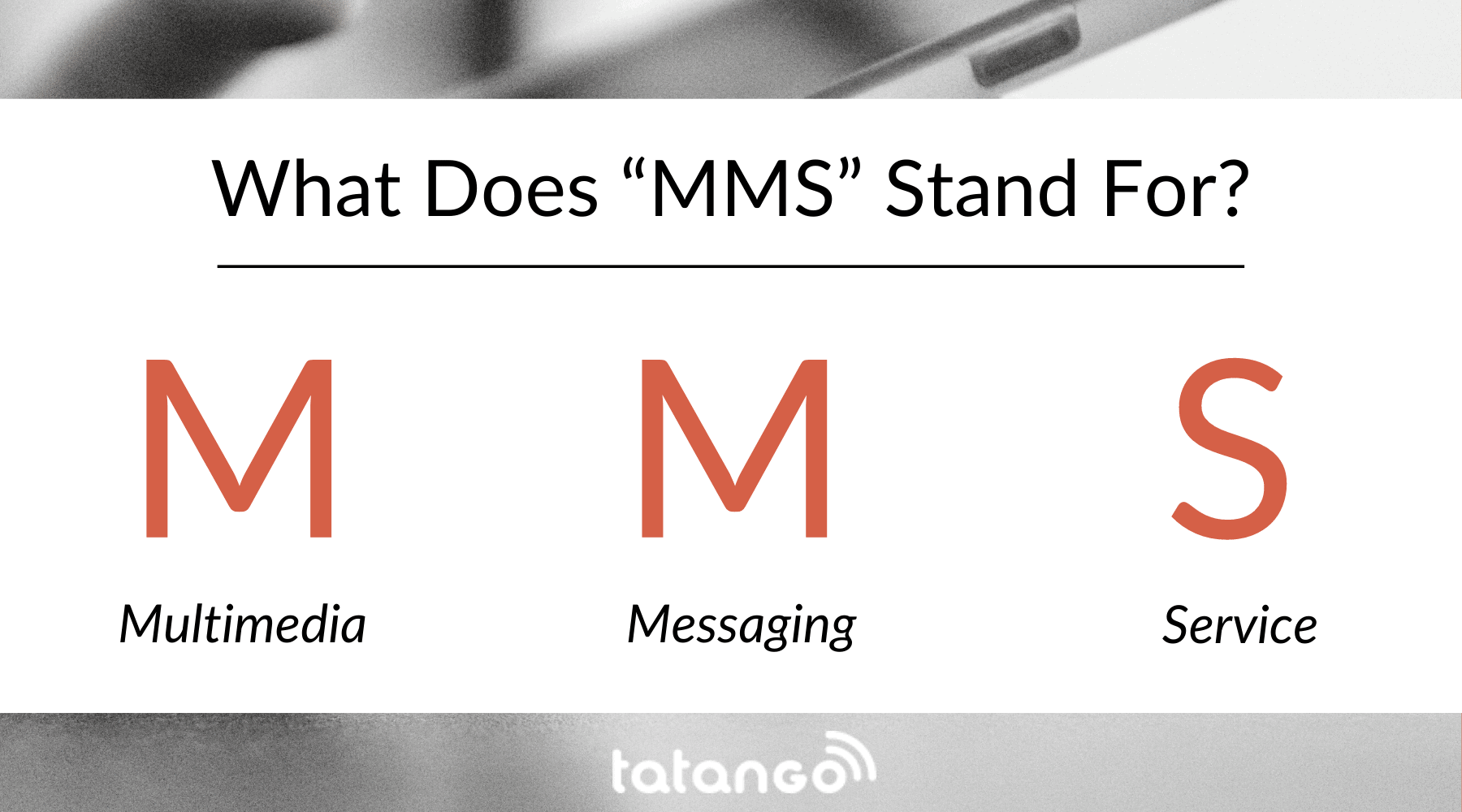
What is MMS Marketing?
MMS is a technology that allows brands to send unlimited texting and multimedia content to and from a consumer’s mobile phone, over the wireless networks. While SMS marketing only allows marketers to send up to 160 characters of text to consumers, MMS marketing allows mobile marketers to send a variety of media content to consumers, including video, sound files, images, or even animated images called gifs.
These kinds of messages can go through all of the standard messaging apps and phone types, such as iPhone’s iMessage, Android and their messaging apps, and most other types of texting apps. All you need is the right short code and the recipient’s consent.
Text message marketing is insanely effective; being able to send multimedia files and messages directly to customers’ cell phones represents the most valuable form of marketing around.
Whether you’re sending individual messages, mobile coupons, or other business text messaging, MMS and SMS marketing campaigns will get you the results you need.
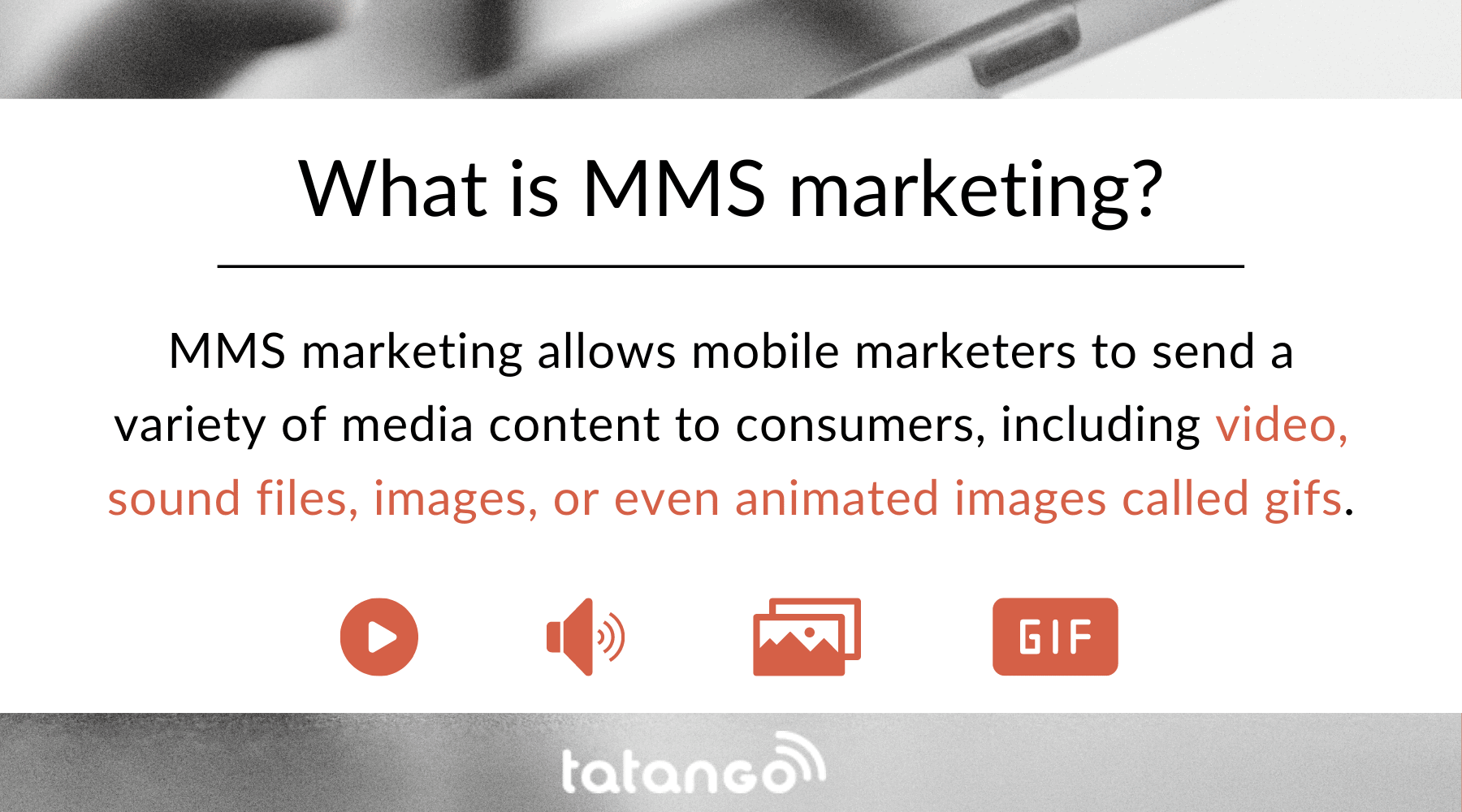
MMS Marketing vs. SMS Marketing
For some examples, check out the following video:
And one more helpful video is below:
MMS Short Code Costs
Short codes are 5-6 digit phone numbers that brands use to send SMS and MMS messages. There are two types of short codes: vanity (customer number) and non-vanity (random number). Brands use a vanity short code because they are easier for consumers to recall, whereas a random non-vanity short code can be harder to remember.
For this reason, a vanity short code costs $1,000/month to lease, whereas a non-vanity short code costs $500/month to lease, regardless of whether brands are sending SMS messages or MMS messages. While the short code costs aren’t influenced by MMS messages, the actual text messaging costs themselves are.
MMS Marketing Costs
Because MMS messages enable more kinds of multimedia messages, it’s more expensive for a mobile marketer to send an MMS marketing message to a consumer’s mobile phone, compared to the cost of sending a SMS message. While the cost of sending an MMS marketing message will vary between mobile messaging providers, on average, an MMS message will cost a marketer two to three times more than an SMS message. Put simply, MMS campaigns are more expensive than SMS campaigns because you’re paying for the increased flexibility and visual appeal.
MMS Short Code Provisioning
Short code provisioning is the process of getting approvals from the wireless carriers to send and receive mobile messages on your 5-6 digit phone number. It’s important to note that a short code can be provisioned for SMS messaging, MMS messaging, or both types of messaging. To provision your short code, you must decide which kind of messaging you want to use at the beginning of the short code provisioning process: MMS or SMS.
If a short code is provisioned for only SMS messaging, and a mobile marketer attempts to send an MMS message using that short code, the message will fail. However, all is not lost if you initially provision a short code for SMS messaging and you eventually want to enable MMS messaging on that short code. To do this, you’ll need to re-provision the short code with the wireless carrier for SMS and MMS messaging. The process to re-provision a short code can take 8 to 12 weeks, and will most likely include re-provisioning fees.
Keep in touch with your mobile carriers and mobile operators. If something goes wrong on their end, your campaign is going to stall in its tracks. Make sure your service providers (like Tatango) are stable and consistent—and make sure you meet their requirements as well.
MMS Marketing Character Limits
An SMS message is limited to only 160 characters, which makes it hard sometimes for mobile marketers to fit everything they want to say into a single message. Luckily for marketers, an MMS message technically can have an unlimited amount of characters. That being said, many carriers and mobile devices will restrict the amount of characters in an MMS message, so we recommend not sending more than 5,000 characters in a single MMS marketing message. (In fact, at Tatango, we’re the only ones to reliably power this many characters!) Those 5,000 characters are in addition to a subject line, and include either a video, image or an animated image, in the message. You can start to see why marketers really love MMS marketing!
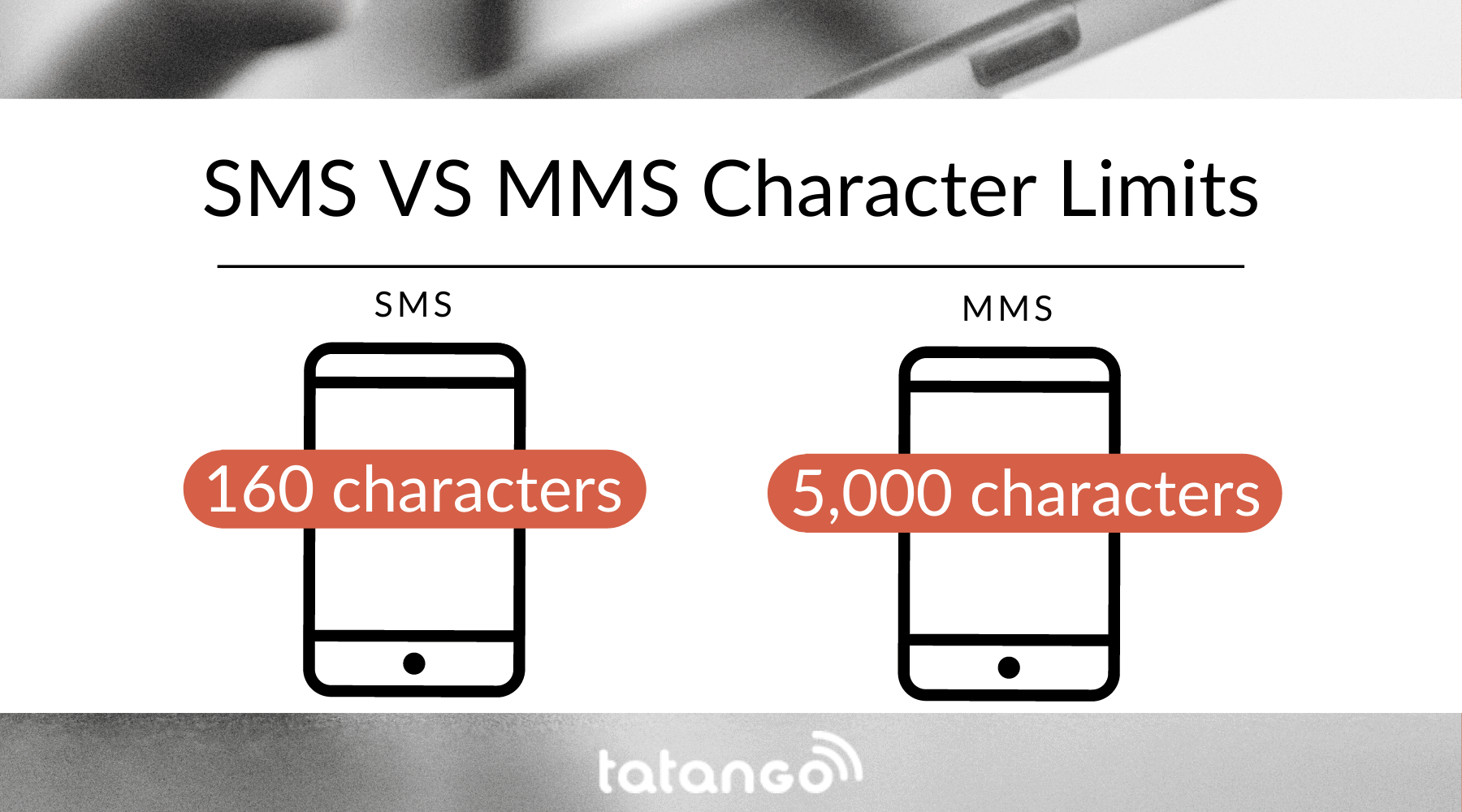
SMS Fallback Messages
It’s important for mobile marketers to know that while the majority of mobile phones can receive MMS messages, some mobile phones can’t receive MMS messages. At the time of writing this, we estimate about 1-2% of mobile phones can’t receive MMS messages.
It’s because of this that it’s critical for marketers to include an “SMS fallback message” whenever they send an MMS message. This SMS fallback message will be sent instead of the intended MMS message if for some reason the mobile device isn’t able to accept MMS messages.
MMS Subject Lines
Another unique thing about MMS messages is that mobile marketers can include a subject line in their messages, similar to email marketing. The ability to add a subject line to a message is not available when sending an SMS message.
On the majority of mobile devices, this subject line will be displayed on the mobile phone in a bold font, which distinguishes it from the other text in the message. On Android devices, the subject will look like <Subject: >.
We recommend that brands limit the amount of characters they use in their MMS subject lines to 40 characters, as this length is supported by all mobile phones and their wireless carriers. Here at Tatango, we recommend our clients use the subject lines in their MMS messages to identify the brand that is sending the message, or to tease the promotion that is being advertised in the body of the message.
MMS Media Content Options
In an MMS message, besides sending up to 5,000 characters, you can send media content. The following types of media content are able to be sent in an MMS message.
- Video
- Image
- Animated image (GIF)
- vCards
To see more about vCards (virtual business cards), check out the video below.
MMS Marketing Case Studies
Here at Tatango, we put together for you some of our favorite MMS marketing case studies that we’ve written about on the Tatango blog. We’ve listed these MMS case studies below, with links to read the full case studies.
Avenue Retail MMS Campaign Generates 6,600% ROI: Avenue, a plus-size women’s clothing store, offered shoppers a $5 MMS coupon on their next purchase when joining their MMS campaign. The retailer reported a 6,600% ROI from their MMS campaign, with an open rate of 97%. Click here for case study.
Vans Launches MMS Campaign For Valentine’s Day: Learn how Van’s created a very cool MMS campaign to send your loved ones an MMS message to express that love on Valentine’s Day. Click here for case study.
Pretty Little Liars Captures 100,000+ Mobile Phone Numbers: ABC’s Pretty Little Liars TV show used MMS messaging to capture over 100,000 of their most loyal fans mobile phone numbers all during only on season. Click here for case study.
Ikea Uses MMS Marketing To Promote Summer Specials: Learn how Ikea is using MMS marketing to send out images to their mobile subscriber, in an effort to promote their new summer outdoor dining and entertainment essentials catalog. Click here for case study.
Taco John’s Goes Loco Over MMS Coupons: Looking for some excellent MMS examples from a fast food provider? Look no further than Taco John’s, as we’ve compiled some of their best MMS messages into one post. Click here for case study.
MMS Marketing Statistics
Want to learn more MMS marketing benefits? Check out these MMS marketing stats below.
- The MMS open rate exceeds 99%. (source)
- 90% of all MMS marketing messages are read within 3 minutes. (source)
- According to some brands, MMS shows 300% more engagement than SMS-only messages.
- In 2016, 387.5 billion MMS messages were sent worldwide. (source)
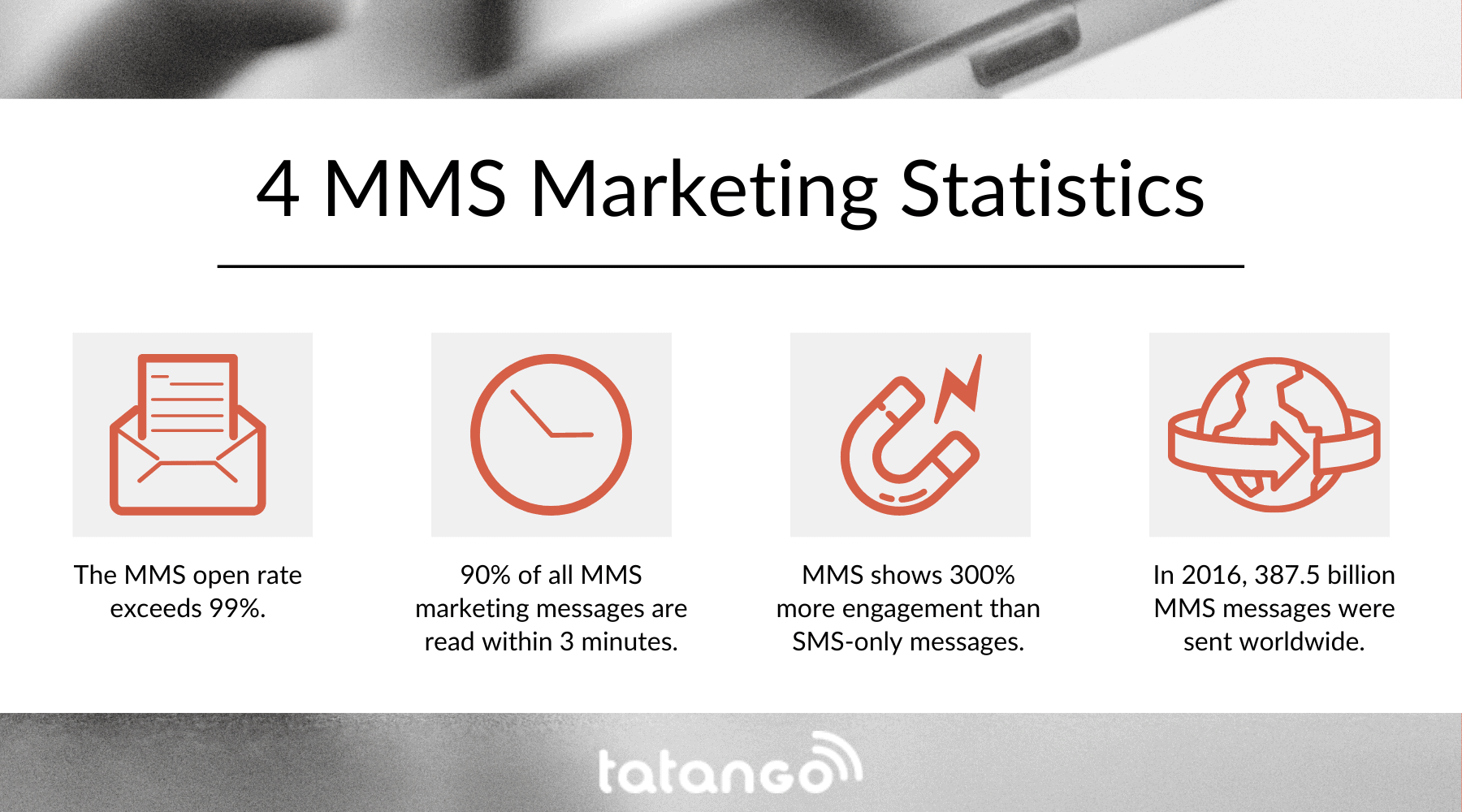
Consumer Misconceptions About MMS
Even though MMS messaging was developed all the way back in 1984, there are still some misconceptions from consumers when it comes to text marketing. We’ve listed the top four consumer misconceptions about MMS messaging below, and their truths.
- It costs more for consumers to receive an MMS message: This misconception is rooted in some truth, as pre-2007 (or around there, depending on the wireless carrier), MMS messages did cost more to send and receive than SMS messages. Since then though, wireless carriers have “bundled” SMS and MMS messages under a single mobile messaging plan, essentially making the cost for consumers equal for both types of messages.
- Most consumer’s mobile phones don’t support MMS video: Since 2008, nearly every mobile device in the United States comes pre-loaded to support all MMS messaging, including MMS video. That’s one of the great parts about MMS: it enables far more kinds of multimedia messages versus SMS, which only enables plain text and hyperlinks.
- Consumers need a smartphone to receive MMS messages: While videos and images will look better on a smartphone because of their screen sizes and resolutions, MMS messages can be received on almost any mobile device—smartphone or not.
- Consumers need a data plan to receive MMS messages: As we said above, the only requirement for a consumer to be able to receive MMS messages on their mobile device is that their mobile device supports MMS. Your wireless service plan does not have to have a data plan, or internet access to be able to receive MMS messages.
MMS Marketing Messaging Speed
Texting throughput speeds are important for mobile marketers, as it will determine how fast your message reaches all your mobile subscribers. The faster the messaging throughputs, the faster all your subscribers will receive your message. While every texting provider will offer marketers different messaging throughput speeds on their platforms for SMS and MMS messaging, it’s very common for MMS messaging throughputs to be significantly lower than SMS messaging throughputs.
These slower throughput speeds for MMS messaging are due to the larger size of an MMS message, compared to an SMS message. While an SMS message is only 160-characters of plain text, an MMS message can be up to 500 characters of text, and will commonly also include a video, images, or animated images. As you can imagine, it takes much more time for a texting provider to process and send a message with more text, or a video, image or an animated image, compared to an SMS message that is only 160 characters.
Note: You can take advantage of the same systems OTT (Over-The-Top) applications like Disney+ do and let the internet carry your messages if the option is available. This can help boost your speeds, but will require a data plan.
Inbound MMS Marketing
While most mobile marketers are aware that they can use a short code to send outbound MMS marketing messages to consumers, very little of them are aware that short codes can also accept inbound MMS messages. This means consumers can not only receive multimedia files from a short code, they can also send media content to a short code. This is great if a marketer wants consumers to engage with their brand, by having those consumers send them images, videos, or even animated images.
Advanced MMS Strategy for Increasing Engagement
If you’re a mobile marketer and have reached the very end of this post, you most likely know everything there is to know about MMS marketing now. Congrats! Still have questions about MMS marketing, mobile marketing strategy, or about launching your own MMS marketing campaign? Contact the MMS marketing experts at Tatango by clicking here or calling 1-888-517-6345.
